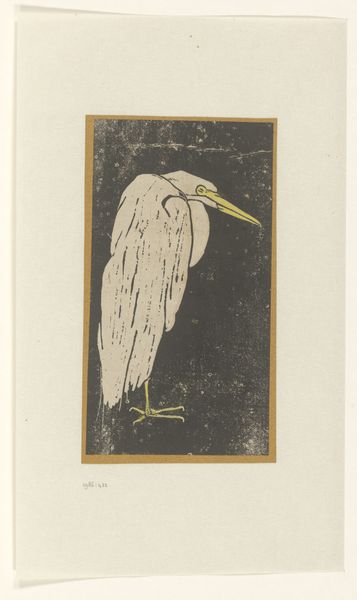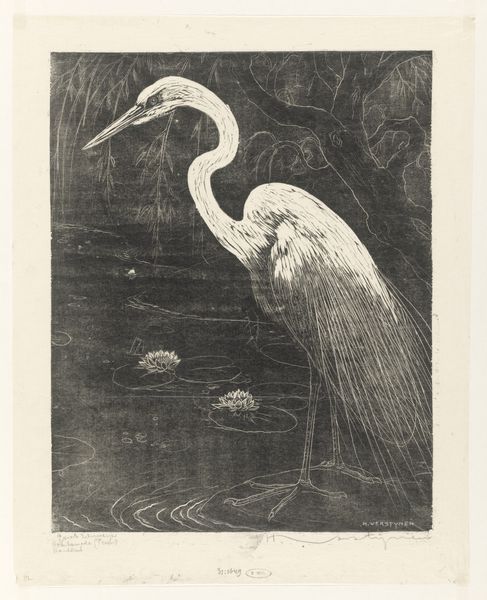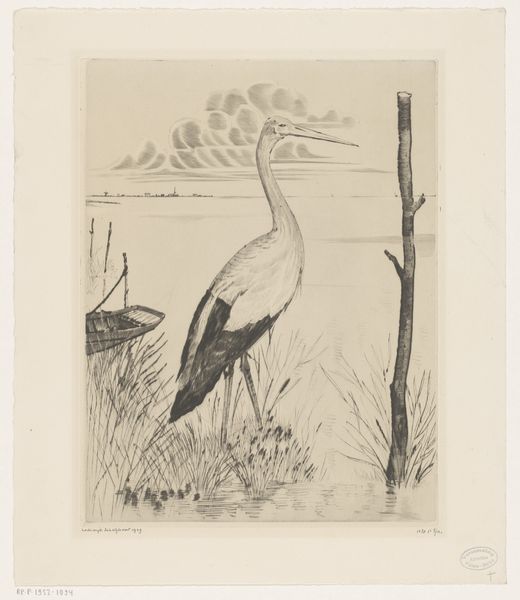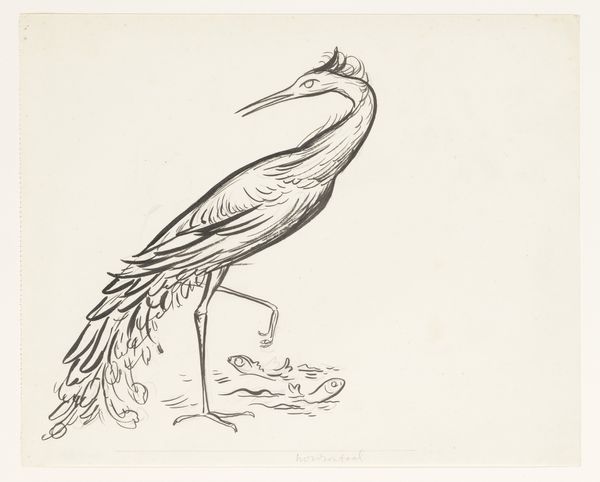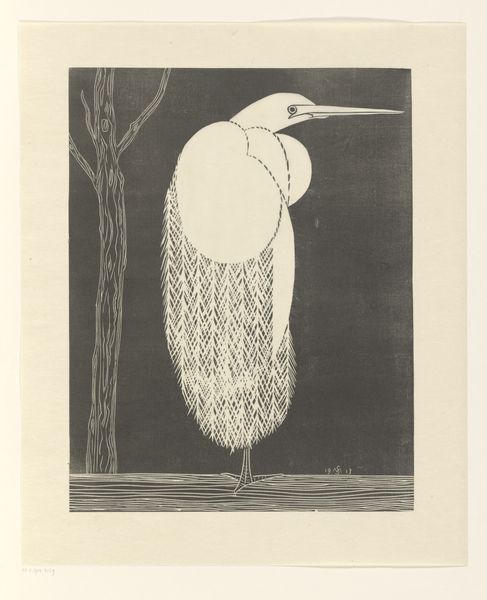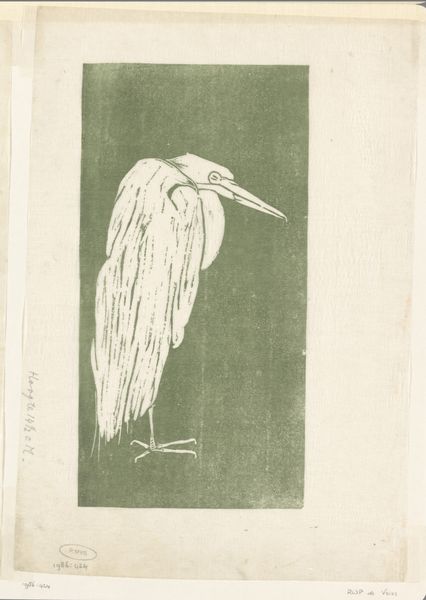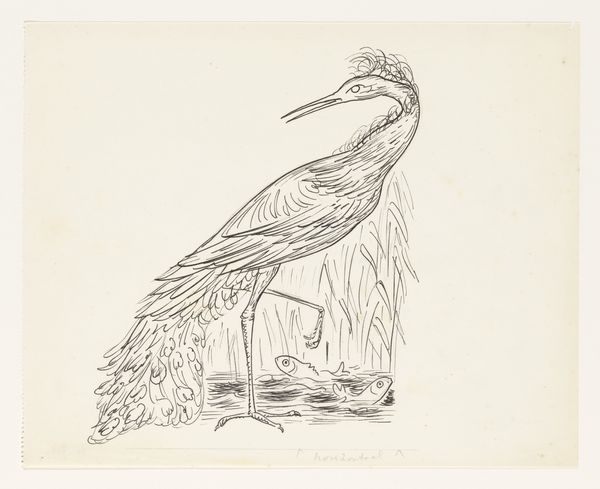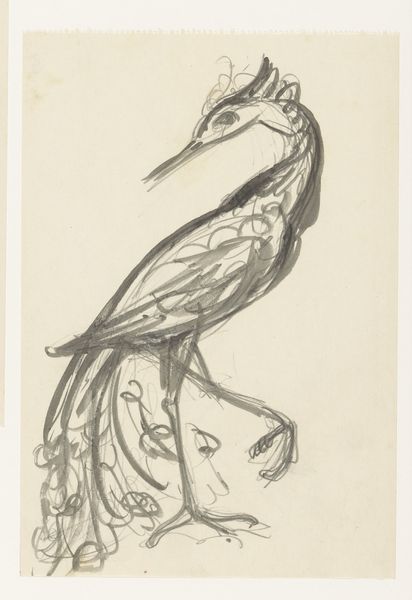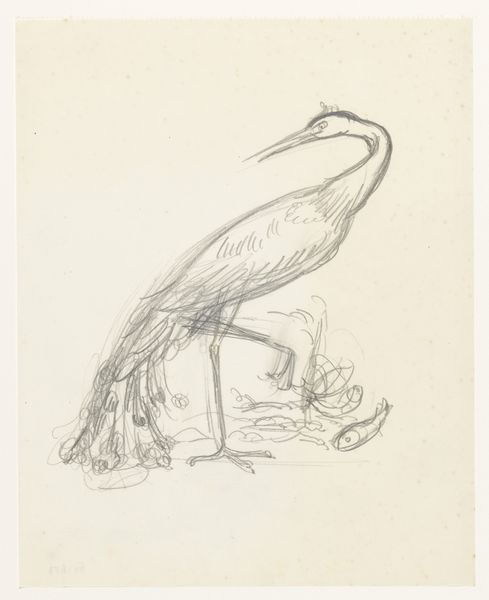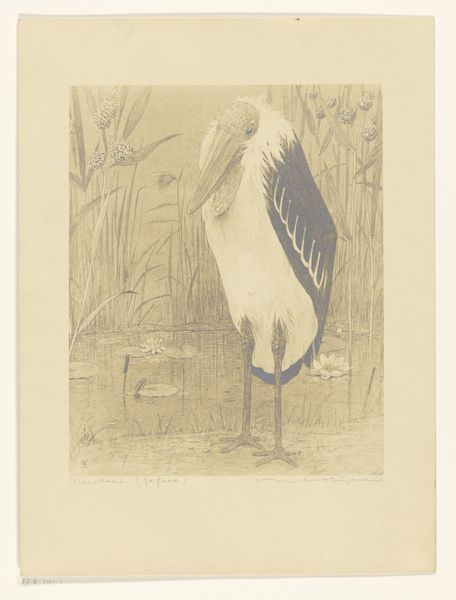
drawing, print, linocut, woodcut
#
drawing
# print
#
linocut
#
landscape
#
figuration
#
geometric
#
woodcut
Dimensions: height 358 mm, width 261 mm
Copyright: Rijks Museum: Open Domain
Editor: Here we have Lodewijk Schelfhout's "Reiger," created in 1933. It's a linocut print depicting a heron. I’m struck by the stark contrast and the almost geometric quality of the bird’s form. How would you approach analyzing this print? Curator: Let's think about the materials and labor involved. This isn't some delicate etching; it's a linocut. We should examine how the artist’s choice of linoleum, a readily available and relatively inexpensive material, democratizes art making. It shifts the focus away from rarefied skill towards the act of production itself. Do you notice the marks left by the cutting tools? Editor: Yes, you can definitely see the individual gouges and cuts, especially in the background. It seems much more rough-hewn than other printing methods. Curator: Exactly! Those marks aren’t flaws. They are evidence of the labor, of the artist physically engaging with the material. What do you think this raw quality communicates about Schelfhout’s relationship to his subject, and maybe even his audience? Think about the social context: the rise of mass production. Editor: I hadn’t thought of it that way, but now it seems like the simplicity of the medium and the directness of the marks mirrors the subject itself – a bird, presented without much artifice, in a very straightforward way. Perhaps a connection with nature, made accessible. Curator: Precisely! And consider who had access to these kinds of images. Prints like these, relatively cheap to produce and disseminate, found their way into homes and schools. What impact might that have had on popular perceptions of art and nature? The linocut itself becomes a tool for shaping cultural values. Editor: That's fascinating! So, beyond just the image, the very medium is telling us about art and society in that period. It changes my whole view of it! Curator: Indeed. Looking at the art this way brings art closer to society, making art history a part of a more complete material culture, and this piece, just by the use of linoleum itself, democratizes what can be called art.
Comments
No comments
Be the first to comment and join the conversation on the ultimate creative platform.
